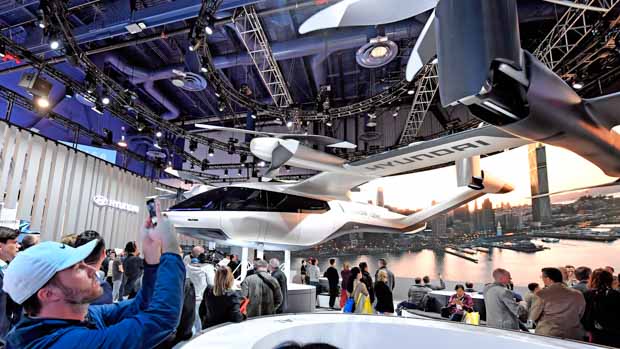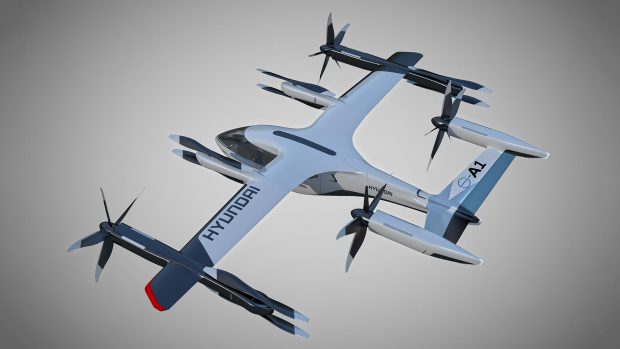-
Car Reviews
- All reviews
- Midsize SUVs
- Small cars
- Utes
- Small SUVs
- Large SUVs
- Large cars
- Sports SUVs
- Sports cars
- Vans
Latest reviews
- Car News
-
Car Comparisons
Latest comparisons
- Chasing Deals
Your flying car dreams may become reality in just seven years as Hyundai launches Supernal to develop personal air vehicles ready for aerial passengers before the decade’s end
Blade Runner, Back to the Future, The Man with the Golden Gun and, of course, Chitty Chitty Bang Bang – we’ve been promised flying cars for generations.
Dream-crushingly, our current vehicles remain rooted on terra firma. But Hyundai says it plans to launch its first commercial taxi or ridesharing air vehicle by 2028. Yes, just seven short years away.
The Korean giant looks to be taking air mobility very seriously, and electric propulsion is key to finally getting a passenger flying car quite literally off the ground.
Hyundai has shown on numerous occasions that its scope is not bound to just cars and SUVs after recently announcing plans to expand its hydrogen tech into trams and even boats in Australia.
Hyundai Motor Group’s plan is to develop an electric-powered and autonomous-capable air vehicle “to accommodate four to five passengers on initial urban and urban-adjacent routes.”
In January 2020 Hyundai and Uber announced a partnership to mass produce Uber Air Taxis for a “future aerial ride share network”. At the same time a full-scale aircraft concept was unveiled at the Consumer Electronics Show (CES).
Looking like a cross between a svelte seaplane and a giant drone, this eVTOL concept (electrical vertical take-off and landing) named S-A1 is a PAV (Personal Air Vehicle) designed for a cruising speed up to 290km/h, cruising altitude of around 300-600 metres and to fly trips up to 100km.
At the unveil it was said the 100% electric PAV would need about five to seven minutes for recharging.
Its multiple rotors and propellors around the carbon fibre composite airframe would “increase safety by decreasing any single point of failure,” while the several, smaller rotors “would reduce noise relative to large rotor helicopters with combustion engines, which is very important to cities.”
This is all well and good, but is it actually going to happen? Hyundai Motor Group’s hardly a small start-up firm ready to promise the world in return for publicity and/or investment, so we should probably take heed.
The company has formed a new US-based Supernal brand to lead the Group’s progress in air mobility, including developing “a family of electric air vehicles.”
We’re told Supernal is an evolution of the Group’s Urban Air Mobility Division, and will utilise Hyundai’s “scaled manufacturing and mobility technologies and innovations to revolutionise air travel.”
Supernal certainly talks a bold game, planning to have this vertical take-off vehicle in front of US regulatory agencies in 2024 to begin the certification process.
Any doubts? Supernal’s brand film will shoot you down with its slightly smug “We know the future because we make it” slogan. Take that, non-believers.
Said film teases us by suggesting “you’ll soon be taking an elevator to the roof to take a flying taxi home,” and “In a few years, rush hour may be a thing of the past.”
And giving the real fuzzies, Supernal’s Chief Technology Officer Ben Diachun says: “Together with Hyundai Motor Group’s proven capabilities and mass production, autonomy and electric propulsion, Supernal will bring humanity closer together in building a sustainable future.”
Tricky points such as costs, regulations, required urban air ports and foolproof autonomy to ensure these things don’t hit each other or fall out of the sky into populated urban areas will presumably be revealed closer to 2028.
But forget about such things for now. Go watch Back to the Future II and dare to dream.
Latest news
About Chasing cars
Chasing Cars reviews are 100% independent.
Because we are powered by Budget Direct Insurance, we don’t receive advertising or sales revenue from car manufacturers.
We’re truly independent – giving you Australia’s best car reviews.


